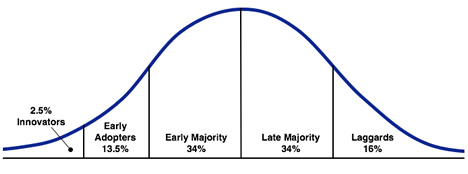 One of my favorite quotes about change is:
One of my favorite quotes about change is:
“Life is a journey, and on a journey the scenery changes.”
The technology industry is also on a journey and on that journey the scenery will change. Whether many industry insiders recognize it or not the scenery is changing and it’s happening quickly.
The line is blurring between what is a PC and what isn’t. Devices like smart phones and tablets are proving to many that computing can take place on a number of different form factors. It is important for those who watch the personal computing industry closely to realize that the landscape as we know it is about to change drastically.
Tablets Take the Computing Challenge
It all began with the iPad. In as many times, in as many years, Apple again released a product that challenged the industry and forced many companies to turn introspective and re-think their product strategy.
The iPad has done quite a bit more than just challenge the industry, it has also challenged consumers to re-consider what exactly a personal computer is and what their needs are with one. What I mean by that is that our research is indicating that many consumers bought an iPad as a partial PC replacement. Meaning they were in the market for a new PC but instead bought an iPad, relegating their old PC as a backup for when they need a mouse and keyboard experience for certain tasks. What is interesting to the last point is that once integrating an iPad consumers realize they need the PC less and less for many tasks, especially when the iPad is paired with a keyboard. There are however, a few tasks like writing long emails or using certain software that these consumer still want a traditional mouse and keyboard experience for, only their observation is that those use cases do not occupy the majority of computing time for them on a regular basis. For that they remark the iPad suffices for their needs the majority of time.
As those in the industry who make PCs are already figuring out, tablets are a viable computing platform and having a tablet strategy is essential for anyone currently competing for PC market share.
We expect quite a bit of innovation in hardware, software, and services in the category over the next few years. Tablet / PC hybrids, which is a tablet with a detachable keyboard, could be one of the most interesting form factors we will see over the next few years. This product, if done right, will give consumers a two-in-one experience where they can have a tablet when they want it and a traditional mouse and keyboard experience when they want it, all in the same product. The big key – if done right.
Anyone Can Make PCs
Tim made the observation last week in his column that a fundamental issue within the technology industry is that the bulk of consumer product companies are simply chasing Apple rather than emerging as leaders themselves.
As companies look to duplicate the iPad and the MacBook Air this point becomes increasingly clear. What this creates is the opportunity for new entrants to create new and disruptive computing products by bringing fresh thinking to the computing landscape.
Perhaps a glimpse at this reality is Vizio’s announcement that they are getting into the personal computer game. With much of the hardware design for electronics moving into the hands of the ODMs, it makes it possible for anyone with a brand, channel, and cash to start making any number of personal electronics.
This is perhaps the biggest evidence about the change we are about to see in the PC landscape. The reality that the traditional companies, who were historically the leaders in this category may get displaced by new and emerging entrants.
Simply put, those who we expected to lead the PC industry may not be those who lead in the future. The truth is innovation does not stand still and if the traditional companies don’t want to do it someone else will.







